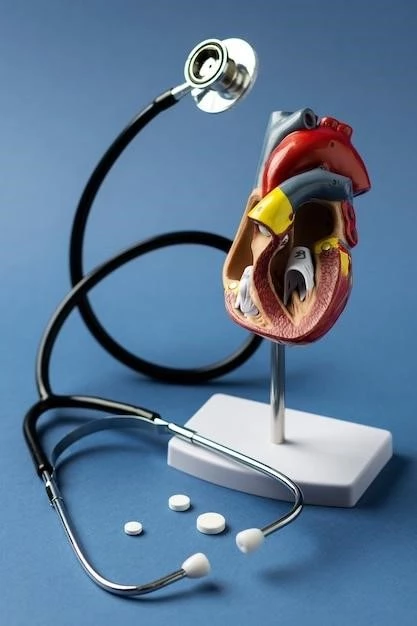Disease ─ Doxorubicin-induced Cardiomyopathy
Do you want to learn more about the devastating impact of doxorubicin-induced cardiomyopathy on the myocardium? This article provides a comprehensive overview of the mechanisms, diagnosis, clinical presentation, prevention, treatment, research, and future directions related to this cardiotoxicity.

I. Introduction
Doxorubicin, an anthracycline used in chemotherapy, is known for its potent anti-cancer effects. However, its use is limited by the risk of cardiotoxicity, which can lead to heart failure. Doxorubicin-induced cardiomyopathy involves complex mechanisms like oxidative stress, apoptosis, and myocardial dysfunction. Understanding these processes is crucial in developing effective cardioprotective strategies for patients undergoing cancer therapy. This article explores the pathophysiology, diagnosis, clinical presentation, prevention, treatment, and ongoing research in the field of doxorubicin-induced cardiomyopathy.
II. Mechanisms of Cardiotoxicity
The cardiotoxic effects of doxorubicin are primarily attributed to its impact on the myocardium. Doxorubicin leads to the generation of reactive oxygen species, causing oxidative stress and damage to cardiac cells. This oxidative damage triggers apoptosis, leading to myocardial dysfunction. Additionally, doxorubicin disrupts mitochondrial function, calcium homeostasis, and sarcomere structure, contributing to cardiac injury. Understanding these intricate mechanisms is essential for developing targeted cardioprotective interventions to mitigate the cardiotoxic effects of anthracyclines during cancer treatment.
III. Diagnosis
Diagnosing doxorubicin-induced cardiomyopathy requires a comprehensive approach. Clinical assessment, including patient history and physical examination, plays a crucial role in early detection. Additionally, imaging modalities such as echocardiography, cardiac magnetic resonance imaging (MRI), and biomarker analysis help evaluate cardiac function and detect myocardial damage. Monitoring changes in ejection fraction, global longitudinal strain, and troponin levels are significant markers in assessing cardiotoxicity. Timely diagnosis allows for prompt intervention to prevent further progression of heart dysfunction in patients undergoing anthracycline-based chemotherapy.
IV. Clinical Presentation
Clinical presentation of doxorubicin-induced cardiomyopathy can vary depending on the extent of myocardial damage. Patients may present with symptoms such as fatigue, dyspnea, exercise intolerance, palpitations, and edema. In severe cases, manifestations of heart failure, including orthopnea, paroxysmal nocturnal dyspnea, and signs of fluid overload, may be present. As cardiac function deteriorates, patients are at increased risk of arrhythmias and sudden cardiac death. Recognizing these clinical signs early on is crucial for timely intervention and management of doxorubicin-induced cardiotoxicity to optimize patient outcomes.
V. Prevention and Treatment
Preventing and managing doxorubicin-induced cardiomyopathy require a multifaceted approach. Strategies to mitigate cardiotoxicity involve the use of cardioprotective agents that target oxidative stress, apoptosis, and inflammation. Interventions such as dexrazoxane, beta-blockers, ACE inhibitors, and angiotensin receptor blockers have shown promise in reducing myocardial damage associated with anthracycline therapy. Additionally, lifestyle modifications, including regular exercise and a heart-healthy diet, may play a role in supporting cardiac health during cancer treatment. Close monitoring of cardiac function through imaging and biomarkers is essential in detecting early signs of cardiotoxicity and adjusting treatment regimens accordingly.
VI. Research and Future Directions
Ongoing research in the field of doxorubicin-induced cardiomyopathy aims to uncover novel therapeutic targets and advance treatment options for patients at risk of anthracycline-induced cardiac toxicity. Scientists are investigating the role of new cardioprotective agents, gene therapy, and stem cell-based interventions in preventing and reversing myocardial damage caused by anti-cancer drugs. Moreover, cutting-edge technologies such as nanomedicine and targeted drug delivery systems hold promise in reducing off-target effects of chemotherapy on the heart while maximizing anti-cancer efficacy. Collaborative efforts between clinicians, researchers, and pharmaceutical companies are crucial in translating these innovative approaches into clinically effective strategies to improve cardiovascular outcomes in cancer patients.
VII. Conclusion
In conclusion, doxorubicin-induced cardiomyopathy represents a significant challenge in cancer therapy due to its potential for causing irreversible myocardial damage and heart failure. Understanding the complex mechanisms of anthracycline-induced cardiotoxicity is essential for early detection and intervention to minimize adverse cardiac effects. With advancements in cardioprotective strategies, personalized medicine approaches, and ongoing research into novel therapeutics, there is hope for improving outcomes and quality of life for cancer patients while minimizing the risk of cardiovascular complications associated with chemotherapy. Continued interdisciplinary collaboration and translational research are vital in addressing the complexities of doxorubicin-induced cardiomyopathy and ultimately enhancing patient care in the oncology setting.
